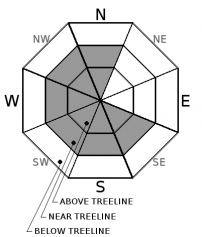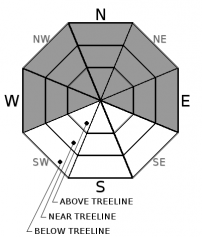| Saturday | Saturday Night | Sunday | |
|---|---|---|---|
| Weather: | Mostly cloudy becoming partly cloudy | Partly cloudy | Partly cloudy becoming mostly cloudy with a slight chance (10-15%) of snow showers in the afternoon |
| Temperatures: | 30 to 35 deg. F. | 14 to 22 deg. F. | 31 to 36 deg. F. |
| Mid Slope Winds: | Variable | Variable | East |
| Wind Speed: | Light | Light with gusts to 25 mph after midnight | 10 to 15 mph in the morning decreasing in the afternoon. Gusts to 25 mph |
| Expected snowfall: | 0 | 0 | 0 |
| Saturday | Saturday Night | Sunday | |
|---|---|---|---|
| Weather: | Mostly cloudy becoming partly cloudy | Partly cloudy | Partly cloudy becoming mostly cloudy with a slight chance (10-15%) of snow showers in the afternoon |
| Temperatures: | 30 to 35 deg. F. | 16 to 22 deg. F. | 30 to 35 deg. F. |
| Ridge Top Winds: | Variable | East | Northeast |
| Wind Speed: | Light with gusts to 25 mph in the afternoon | 15 to 20 mph with gusts to 30 mph increasing to 40 mph after midnight | 15 to 25 mph with gusts to 45 mph |
| Expected snowfall: | 0 | 0 | 0 |

























